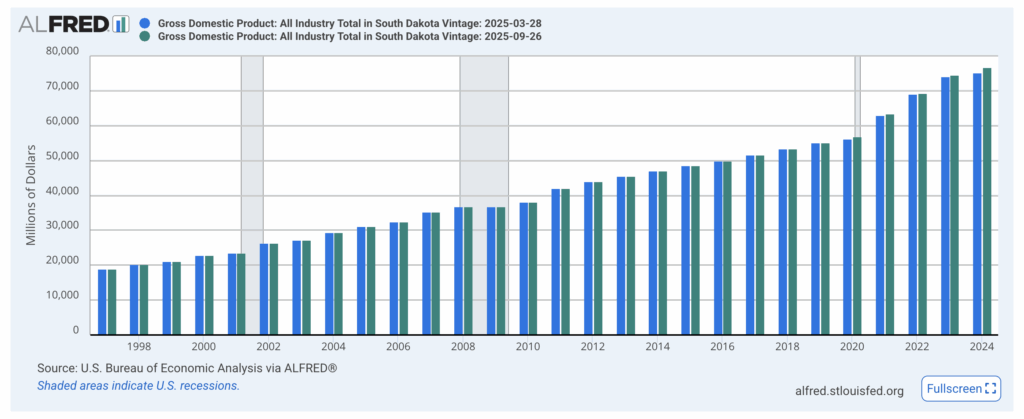Economic diversification begins with local content – Arab News

ROSHN Group’s Local Content Strategy: A Catalyst for Sustainable Development Goals
Executive Summary
ROSHN Group is implementing a transformative local content strategy aligned with Saudi Arabia’s Vision 2030, serving as a key driver for economic diversification and the achievement of several United Nations Sustainable Development Goals (SDGs). By prioritizing local materials, partnerships, and talent, the Group is strengthening domestic supply chains and contributing to sustainable economic growth, thereby enhancing the quality of life for communities. This report outlines the strategic approaches, key outcomes, and direct contributions of this initiative to the global SDG framework.
Strategic Framework and Alignment with SDGs
ROSHN Group’s local content strategy is built upon a three-tiered approach, each phase designed to maximize economic impact and support specific SDGs:
- Operational Integration: Focusing on direct spending within the Group’s own operations to immediately boost local economies, directly supporting SDG 8 (Decent Work and Economic Growth).
- Value Chain Investment: Deepening investments across the supply chain to build resilient local industries and infrastructure, contributing to SDG 9 (Industry, Innovation, and Infrastructure).
- Ecosystem Expansion: Broadening the strategy in line with national expansion to foster a comprehensive and sustainable economic ecosystem, reinforcing SDG 11 (Sustainable Cities and Communities) and SDG 17 (Partnerships for the Goals).
Impact on Decent Work and Economic Growth (SDG 8)
The strategy has yielded significant results in promoting local economic participation and creating decent work opportunities. Key performance indicators demonstrate a strong commitment to SDG 8:
- Local Procurement: In 2024, over 71% of all contracts were awarded to local suppliers, directly injecting capital into the national economy.
- Strategic Partnerships: More than 70 framework agreements are in place with Saudi-based companies, ensuring a stable and localized supply chain.
- SME Empowerment: Over SR300 million ($80 million) in contracts have been awarded to local Small and Medium-sized Enterprises (SMEs), fostering inclusive growth. Regular bootcamps are held for SMEs, covering topics from contract negotiation to sustainable practices.
- Overall Spending: Local spending has increased by over 400%, now constituting more than 50% of the Group’s total expenditure.
Commitment to Quality Education and Human Capital (SDG 4)
Investing in local talent is a cornerstone of the Group’s contribution to sustainable development, with a focus on building a skilled workforce for the future. This directly addresses the targets of SDG 4 (Quality Education) and enhances the long-term viability of SDG 8.
- Training and Development Goal: A commitment is in place to train over 5,000 Saudi nationals by 2030, focusing on technology and asset management skills.
- Workforce Development Partnership: As a strategic partner for the Public Investment Fund’s azm Program, ROSHN Group is supporting the training of young Saudi professionals in critical sectors such as construction, project management, and health and safety.
Conclusion: A Foundation for Sustainable Diversification
ROSHN Group’s local content initiative serves as a powerful model for aligning corporate strategy with national development plans and the global Sustainable Development Goals. By systematically prioritizing local suppliers, SMEs, and talent, the Group is not only accelerating project execution but also building a lasting legacy of economic resilience and shared prosperity. This approach establishes local content as the fundamental driver of sustainable growth and economic diversification in the Kingdom, creating value that extends to all stakeholders and contributes to a more sustainable and equitable future.
1. Which SDGs are addressed or connected to the issues highlighted in the article?
-
SDG 8: Decent Work and Economic Growth
The article’s core theme is economic diversification, job creation, and support for local businesses, which are central to SDG 8. It details ROSHN Group’s strategy to boost the local economy by awarding contracts to local suppliers and Small and Medium-sized Enterprises (SMEs), and by investing in training for the local workforce.
-
SDG 9: Industry, Innovation, and Infrastructure
The focus on strengthening local supply chains, increasing the use of local materials, and building the capacity of Saudi-based companies directly relates to promoting inclusive and sustainable industrialization. The article highlights how these efforts support the Kingdom’s wider industrial ecosystem.
-
SDG 11: Sustainable Cities and Communities
As a major real estate developer, ROSHN Group’s work contributes to building communities. The article mentions that their strategy leads to an “enhanced quality of life” and includes training SMEs on “sustainable-focused practices,” which aligns with the goal of creating sustainable and inclusive urban environments.
-
SDG 17: Partnerships for the Goals
The article emphasizes collaboration as a key driver of its success. It mentions partnerships with local suppliers, SMEs, and a strategic partnership with the Public Investment Fund’s (PIF) “azm Program,” showcasing a multi-stakeholder approach to achieving development goals.
2. What specific targets under those SDGs can be identified based on the article’s content?
-
SDG 8: Decent Work and Economic Growth
- Target 8.2: Achieve higher levels of economic productivity through diversification and technological upgrading. The article’s entire premise is based on the “Vision 2030 strategy to diversify the economy” and training Saudis in “areas of technology.”
- Target 8.3: Promote development-oriented policies that support decent job creation and the growth of micro-, small- and medium-sized enterprises. The article explicitly states that partnering with “small to medium-sized firms has also been a priority,” evidenced by bootcamps and awarding over “SR300 million ($80 million) to Saudi-based SMEs.”
- Target 8.6: Substantially reduce the proportion of youth not in employment, education or training. The goal to “train over 5,000 Saudis by 2030” and the partnership with the “azm Program” to support “young Saudi professionals” directly address this target.
-
SDG 9: Industry, Innovation, and Infrastructure
- Target 9.2: Promote inclusive and sustainable industrialization. The strategy of “increasing the proportion of local materials and partnerships” is a direct effort to build local industrial capacity and “strengthening local supply chains.”
- Target 9.3: Increase the access of small-scale industrial and other enterprises to value chains and markets. ROSHN Group’s effort to integrate SMEs into its projects through “over 70 framework agreements with Saudi-based companies” and awarding them significant contracts directly supports this target.
-
SDG 11: Sustainable Cities and Communities
- Target 11.a: Support positive economic links between urban, peri-urban and rural areas by strengthening national development planning. The strategy of sourcing locally and building local supply chains reinforces economic links within the Kingdom, contributing to balanced regional development as part of the Vision 2030 national plan.
-
SDG 17: Partnerships for the Goals
- Target 17.17: Encourage and promote effective public, public-private and civil society partnerships. The collaboration between ROSHN Group (a PIF-owned entity), private local suppliers, SMEs, and the public “azm Program” is a clear example of a public-private partnership model aimed at achieving national economic goals.
3. Are there any indicators mentioned or implied in the article that can be used to measure progress towards the identified targets?
Yes, the article provides several specific quantitative and qualitative indicators that can be used to measure progress:
- Percentage of contracts awarded to local suppliers: The article states that “in 2024, over 71 percent of the contracts we awarded went to local suppliers.” This is a direct indicator of local procurement and support for local businesses (SDG 8, SDG 9).
- Value of contracts awarded to SMEs: The figure “over SR300 million ($80 million) awarded to Saudi-based SMEs” serves as a financial indicator of support for small and medium-sized enterprises (Target 8.3).
- Number of local partnership agreements: The mention of “more than 70 framework agreements with Saudi-based companies” is an indicator of the scale of local partnerships (SDG 9, SDG 17).
- Investment in human capital development: The goal to “train over 5,000 Saudis by 2030” is a clear indicator for measuring progress in workforce development and youth training (Target 8.6).
- Proportion of local spending: The article notes that “local spending now makes up more than 50 percent of our total spending” and has “increased by over 400 percent,” which are strong indicators of the economic impact of the local content strategy (SDG 8, SDG 9).
- Adoption of sustainable practices: While not quantified, the mention of training SMEs on “how they can adopt sustainable-focused practices” is a qualitative indicator of progress towards sustainability goals (SDG 11).
4. Create a table with three columns titled ‘SDGs, Targets and Indicators” to present the findings from analyzing the article.
| SDGs | Targets | Indicators |
|---|---|---|
| SDG 8: Decent Work and Economic Growth |
|
|
| SDG 9: Industry, Innovation, and Infrastructure |
|
|
| SDG 11: Sustainable Cities and Communities |
|
|
| SDG 17: Partnerships for the Goals |
|
|
Source: arabnews.com
What is Your Reaction?
 Like
0
Like
0
 Dislike
0
Dislike
0
 Love
0
Love
0
 Funny
0
Funny
0
 Angry
0
Angry
0
 Sad
0
Sad
0
 Wow
0
Wow
0
















































:focal(1500,1000)/https://media.globalcitizen.org/a6/9a/a69a4720-d8a1-4715-b596-18738d03c05c/rotary_polio_hero_image.jpg?#)







/countries/sri-lanka/photo-credit---dmc-sri-lanka.tmb-1200v.jpg?sfvrsn=dc298bcc_1#)




















